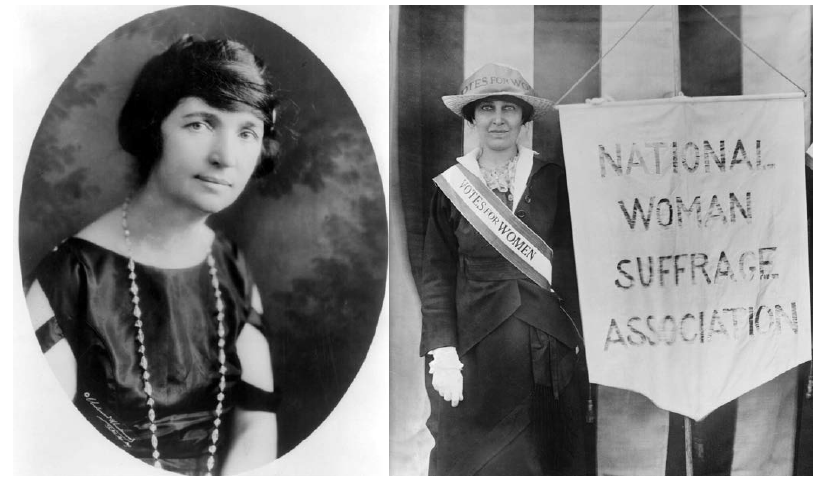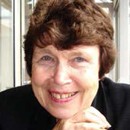The idea of taking something orally to prevent pregnancy was not new. Throughout history and in many cultures, women have swallowed potions in an effort to control their fertility. However, the scientific understanding of reproduction brought exciting new possibilities. By the 1930s, scientists knew that progesterone inhibited ovulation in animals, but it took another three decades and some fortuitous events before ‘the Pill’, as it is popularly referred to, became a reality. This account pays tribute to the key contributors to that development.
Russell Marker (1902–1995)
In 1940, progesterone was one of the rarest and most expensive drugs in the world, selling for $200 a gram. It was extracted from animal sources and was in great demand for the treatment of women with recurrent miscarriage. Prof Marker, a chemist at Pennsylvania State University, believed he could find a better source in plants. In the summer of 1940, he tramped alone through the wilds of Mexico and discovered a source in the lumpy root of a wild Mexican yam. No one would finance his project so he left the university and established alaboratory in a shed in Mexico City. Working independently, he developed the first mass supply of progesterone and thus became rich. For a few years he was involved in the pharmaceutical production of progesterone at Syntex Laboratories, but in 1949, aged 47, he retired and never returned to science.
Dr Carl Djerassi (1923–2015)
Progesterone was most effective when administered by injection. An orally active form was needed and Djerassi was responsible for this breakthrough. He was born in Vienna, Austria, and raised in Bulgaria. His parents were doctors and, when he was 16, he and his mother immigrated to the USA. When Marker left Syntex Laboratories, Djerassi, then a young chemistry graduate, was appointed to lead the firm’s steroid research. In 1951, his team produced the first orally active progestogen called norethisterone, still used in formulations today, such as Noriday and Brevinor. Djerassi was not only a distinguished chemist, but also a poet, novelist and playwright.
Margaret Sanger (1879–1966)
Margaret Sanger was the prime motivator in the development of the Pill. The sixth of 11 children, after nursing her mother who had tuberculosis, she trained as a nurse. In New York she saw the effect of too-frequent childbearing on the health of women and children and the tragedy of unsafe abortion. She became an ardent proponent of birth control, a term she promoted. In 1914 she challenged the repressive Comstock laws, which forbade distributing contraceptive information, by releasing material expounding the benefits of douches, condoms and pessaries. To avoid prosecution she fled to Europe and eventually the case against her was dismissed.
Back in the USA, in 1915, she advocated use of the diaphragm, which had to be smuggled into the country from Europe. In 1916, she established the first US birth control clinic in Brooklyn, New York, and for this daring venture she was convicted and served 30 days in jail. After her release she won an appeal, opening the way for physicians to give birth control advice. She published a monthly magazine Birth Control Review and in 1921 founded the American Birth Control League, the forerunner of Planned Parenthood. In 1927 she organised the first World Population Conference in Geneva. At a meeting in India, in 1952, she was one of the founders of the International Planned Parenthood Federation (IPPF).
She married twice, first to Bill Sanger, the father of her three children, and then to an older millionaire, Noah Slee, who helped finance her projects. In December 1950, at the age of 71, she was introduced to Dr Gregory Pincus at a dinner party and a spark was ignited when she found he was interested in reproductive hormones. She implored him to find a better method of contraception for women and secured a small grant from Planned Parenthood that enabled him to commence research on this project.
Katharine McCormick (1875–1967)
Sanger told her friend Katharine McCormick about Pincus’s research. In 1953, frustrated by Planned Parenthood’s meagre interest and support, the two women met with Pincus and, with McCormick providing a 50-fold increase in funding, encouraged him to dramatically expand the scope of the research. McCormick came from a privileged background. Her father supported education for women and she was the first woman to graduate as a biologist from the Massachusetts Institute of Technology. After graduation she married Stanley McCormick, but two years later he was diagnosed with schizophrenia and then dementia, requiring full-time care. She chose not to have children for fear of passing on the illness. She met Margaret Sanger in 1917 and was a keen supporter of birth control, a feminist, suffragist and philanthropic supporter of education for women as well as schizophrenia research. Her husband died in 1947 and she inherited his wealth, largely generated from the McCormick firm, International Harvester. Now over 70, she was free to pursue her own, rather than the McCormick family, interests and she provided almost the entire $2 million for the development of the Pill.
Dr Gregory Pincus (1903–1967)
Pincus was born in New Jersey into a Jewish family. He attended Cornell and Harvard Universities, then Cambridge University, in the UK, and the Kaiser Wilhelm Institute for Biology in Berlin. He returned to the USA to pursue his career as a biologist and reproductive physiologist, but because of controversial research on in vitro fertilisation he lost his position at Harvard and henceforth worked outside academia. With the grant provided by Planned Parenthood he confirmed earlier research on progesterone and then asked pharmaceutical companies to supply chemical compounds with progestogenic activity. Nearly 200 compounds were screened by his team; the three most promising were Syntex’s norethisterone (1951) and Searle’s norethynodrel (1952) and norethandrolone (1953). However, since Pincus was not a clinician he needed a collaborator in order to prove the safety of the Pill in human trials.

Friends Margaret Sanger (left) and Katharine McCormick (right) joined forces to fund the research that led to the contraceptive pill.
Dr John Rock (1890–1984)
Rock was clinical professor of gynaecology at Harvard. His specialty was infertility. At a scientific conference in 1952, Pincus and Rock discovered they were using similar approaches to achieve opposite goals. Rock was using hormones to stop ovulation for a three-month period to see if the ovaries would rebound after a rest period. About 15 per cent of women became pregnant following this treatment. In 1954, at Pincus’s suggestion, he initiated the first trials on infertility patients using the three different progestogens. Trials of the Pill as a contraceptive could not be performed in Massachusetts because dispensing contraception was still a felony in that state.
Rock found Searle’s norethynodrel gave better cycle control and selected this for the first contraceptive trials in women. Serendipitously, it was discovered that the drug was in fact contaminated with a small amount of oestrogen and this was the origin of the combined pill containing oestrogen as well as a progestogen. This combination gave better cycle control than progestogen alone. The first large-scale contraceptive trial in women began in April 1956, supervised by Dr Edris Rice-Wray (1904–90) in the Caribbean Island of Puerto Rico, a self-governing territory of the USA.
On 10 June 1957 the FDA approved Enovid, a combination of norethynodrel and mestranol, for menstrual disorders and, on 9 June 1960, for contraceptive use. Searle did not market Enovid commercially as a contraceptive until July 1961 and it was never introduced into New Zealand. The first pill in New Zealand was Schering’s Anovlar, introduced in 1961.
Rock was a Catholic and a father of five. At the age of 70, he launched a one-man campaign to gain Vatican approval of the Pill, arguing that the church should consider it a natural form of birth control. In 1963 he published The Time Has Come: A Catholic Doctor’s Proposals to End the Battle over Birth Control. It was a crushing defeat, in July 1968, when the Pope officially banned the Pill in the encyclical Humanae Vitae. When Rock died, at the age of 94, he was still bitterly disappointed the church refused to change its stance on the Pill.
It is a remarkable story; an eccentric chemist driven to find a plant source of progesterone; another who synthesised a progestogen that could be swallowed; two elderly women with a life-long passion to improve the lot of women and with the money to finance their vision; a maverick reproductive scientist who accepted their challenge and a Catholic doctor whose work linked infertility with the control of fertility. They would all be astounded at the influence that their endeavours have had on the lives of women. Reliable contraception has enabled women to think of roles beyond that of wife and mother and for couples to enjoy sexual expression without the fear of an unintended pregnancy.
Further reading
Eig J. The birth of the pill. New York: Norton; 2014.






Leave a Reply